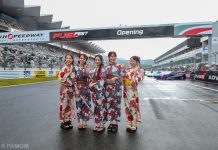Day Three:
Kyoto Imperial Palace (Kyoto Gosho) – The Imperial residence when Kyoto was the capital of Japan. It was the Imperial Palace for Japan’s Imperial Family until 1868, when the emperor and capital were moved from Kyoto to Tokyo. It is located in the spacious Kyoto Imperial Park.
The palace burnt down and was moved around the city several times over the centuries. The present reconstruction dates from 1855. The palace complex is enclosed by a long wall and consists of several gates, halls and gardens. The enthronement ceremonies of Emperors Taisho and Showa were still held in the palace’s main hall, but the present Emperor’s ceremony took place at the Tokyo Imperial Palace.
->The palace can be visited only on guided tours held by the Imperial Household Agency. In order to join a tour, you need to apply for permission in advance with your passport at the agency’s office in the Kyoto Imperial Park. Reservations over the internet are also possible.
To book a tour, you need to apply in advance with your passport at the Imperial Household Agency’s office in Kyoto Imperial Park. Reservations are often possible on the same day as the intended visit. The agency office is open Monday to Friday from 8:45 to 12:00 and from 13:00 to 17:00.
Additionally, a small number of tour spots are available for reservation over the agency’s website, however, these often get booked out. Online reservations must be completed several days before the intended visit.
Golden Pavilion (Kinkaku) – is a Zen temple formally known as Rokuonji and surround by beautiful Japanese gardens. The temple is literally covered in gold – gold leaf and probably the most famous Japanese temples. Kinkakuji was converted into a Zen temple after Yoshimitsu’s death in 1408.
Ryoan-ji Temple – Famous for its Zen garden, which is considered to be one of the most notable examples of the “dry-landscape” style. The garden consists of raked gravel and fifteen moss-covered boulders, which are placed so that, when looking at the garden from any angle (other than from above) only fourteen of the boulders are visible at one time. It is traditionally said that only through attaining enlightenment would one be able to view the fifteenth boulder. Some say it is the quintessence of Zen art, and perhaps the single greatest masterpiece of Japanese culture. The meaning of the garden’s arrangement is unknown and up to each visitor’s interpretation. It is considered to be one of the top three Japanese gardens in Japan. Ryoanji is a Zen temple in northwestern Kyoto.
**Also, if facing the garden from the far right and about 8 feet back a person of about 1.82m(6ft) in height can see all 15 boulders, though the small boulder farthest to the left appears to be part of the much larger boulder immediately next to it.
**Construction Notice: Ryoanji is currently being renovated until February 2010. The temple will remain open during the renovation period except between January 5 and February 25, 2010, when the temple will be closed.
Tenryuji Temple – is a Zen temple in the Arashiyama area of Kyoto, is famous for its gardens, history and religious significance. It has been ranked first among the city’s “Five Great Zen Temples”. The temple, like many other temples burnt down several times over its history. The current buildings date from the Meiji Period. Muso Soseki, the temple’s founding abbot and famous garden designer, created Tenryuji’s landscape garden which, unlike the temple buildings, survived the many fires and is considered one of the oldest of its kind.
Kyoto Station has Japan’s second-largest train station building and is one of the country’s largest buildings, incorporating a department store, hotel, theater, game center, shopping mall, government offices, various restaurants and an observation deck can be found on the facility’s 15+ floors. The new Kyoto Station building was built on the occasion of the 1,200th anniversary of the Heian Capital foundation. It was opened to the public in 1997 and stands in perfect contrast with many foreign tourists’ image of Kyoto as the capital of traditional Japan.

















